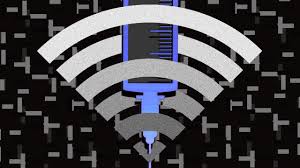Unlike point solutions, Inspiren unifies resident safety, care planning, staffing, and emergency response into a single AI-powered platform.
An artificial intelligence-powered virtual assistant platform for senior living and care providers.
Betting that AI could lighten the clinician load.
Home Instead goal: Applying technology to make home care more efficient.

 Broadband penetration among adults in the US – is the job done? According to Parks Associates,
Broadband penetration among adults in the US – is the job done? According to Parks Associates,  Apple recognizes that aging is at the core of a device/health strategy. Several features were announced at Apple’s developer conference this week that were specifically relevant for an older demographic. Perhaps that population, likely aged 70+, may not (yet) have an iPhone or an Apple Watch. Noting the tech adoption gaps cited by
Apple recognizes that aging is at the core of a device/health strategy. Several features were announced at Apple’s developer conference this week that were specifically relevant for an older demographic. Perhaps that population, likely aged 70+, may not (yet) have an iPhone or an Apple Watch. Noting the tech adoption gaps cited by April 2021 – the season for tech surveys.
April 2021 – the season for tech surveys.  First the ‘good news’ about tech adoption…
First the ‘good news’ about tech adoption…  Pew Research just published its periodic survey about Internet use. Let’s assume consensus that growing the percentage of those using the Internet was a social good. Let’s assume that many are now concerned that older adults may have missed vaccine sign-up opportunities without access to the Internet. Pew’s survey
Pew Research just published its periodic survey about Internet use. Let’s assume consensus that growing the percentage of those using the Internet was a social good. Let’s assume that many are now concerned that older adults may have missed vaccine sign-up opportunities without access to the Internet. Pew’s survey  Looking out toward the future – what trends matter most?
Looking out toward the future – what trends matter most?